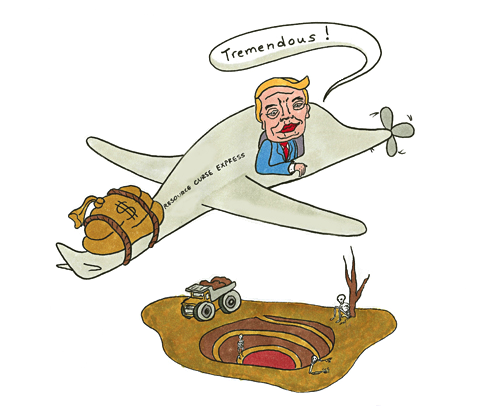When you purchase Fairtrade Gold jewelry, you are making a real difference to the small-scale Fairtrade certified communities where the gold is sourced.
You are choosing to have the wealth stay in local communities versus having it exported to shareholders around the world.
There are in fact two types of gold mining: large-scale and small-scale. The critical difference between large-scale mining and small-scale mining is that the former is about the politics of greed while the latter is about the politics of bread.
With large-scale mining, the objective is to extract as much wealth as possible to enrich the shareholders. More money in their pockets means less money goes to local communities. The relationships between large-scale mining operations and African governments are often corrupt.

I should point out that the nefarious relationship between government and large-scale mining operations not only undermines the producer communities and their environments, but is also a pandemic. We need only to look what is taking place in Washington at the EPA, where the fox is guarding the hen house. Or in New Mexico, where I live, where large-scale mining companies write the environmental regulations, permitting them to poison ground water, our state’s most precious resource.
With Fairtrade Gold mining, it is not about government control at the expense of local community benefit. There is a voluntary relationship between the producer and the jewelers that is regulated not by government but by a Fairtrade auditing organization. One of the key objectives is to keep as much money in the local community as possible.
The power and control of the resource is centered in the local community.
Fairtrade Gold achieves this goal by giving the people of the land the full ability to control and benefit from the resources of their land. Gold comes from small-scale mining communities that employ fair wage standards. The impact of Fairtrade Gold on these communities is positively dramatic.
Two tangible examples of how Fairtrade increases revenues are community premiums and fair pricing.
For every kilo of Fairtrade Gold sold, the community the small-scale mining operation is in receives a premium of $2,000 USD. How they utilize these funds is determined by election. Over the past few years, these premiums have been used for elder care, health clinics, and improvements to schools.
Typically, small-scale miners must sell their gold to middlemen, who might purchase a few dollars of gold from a miner at a time. These middlemen typically pay between 20% to 30% or more under international spot price for the gold. This hand-to-mouth poverty cycle is impossible to break without fair economic conditions.
Small-scale Fairtrade Gold miners get a fair international price for their gold, typically anywhere from 95-98%! This translates to more local jobs and a more vibrant economy.
When you purchase Fairtrade Gold jewelry, you are making a real difference to the small-scale mining communities and our environment.
*Continue on to the next step in Fairtrade Gold vs Dirty Gold sourcing: Shipment and Traceability. Or return to the previous step: Job Market.
*Return to our Fairtrade Gold vs Dirty Gold Infographic in full.
*Or for more info, see our Ethical Jewelry Exposé: Lies, Damn Lies, and Conflict Free Diamonds.